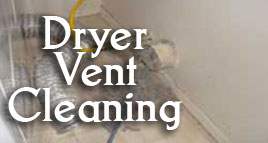When it comes to dryer vent cleaning, many people don’t take
it earnestly because they’re overconfident that the machine wouldn’t catch fire. This is one of the main reasons
we are submitted to write on this subject. Cleaning dryer vents is as substantial for safety as any other
thing. Therefore, it’s essential to clean the dryer’s lint trap after every washer; Fresh-air duct and vent
cleaning decreases the danger of fire by almost 90%. Cleaning dryer vent begin from behind the
dryer. Dryer vent clean the entire vent run from behind the dryer clear direct to the exhaust on the
outside – does not matter where it exits, roof or side. We clean under the lint trap in the dryer too.
| Dryer vents need cleaning periodically.
Did you know that improperly preserved dryer vents reason more house blazes than smokestack? More than
5,000 house fires yearly are directly caused by lint buildup in dryer vents. When was the last time yours
were cleaned? A clean dryer vent is more safty, will save your money (and is
preferable for the environment) by letting your clothes to dry faster with less power, and extends the
life of your dryer, as it doesn't work as arduous. The next time you have your carpets cleaned, assume
that having your dryer vents cleaned as well. |
|
In today's houses, dryer vents tend to be vented longer spaces, making more places for
lint to combine. Even though dryers are equipped with lint traps, a considerable amount of lint is not caught
by the trap, and instead, increases inside the dryer. Moreover creating a fire danger, if your dryer vent
duct is too long or has too many wraps, it will cause your dryer to take much more than necessary to dry
loads, using wasted energy and electricity. Eventually, inappropriate clearance extent between the dryer and
the wall can make the dryer work inefficiently. Many people make problems by putting their dryer verses the
wall smashing the venting material in the process. The accumulative effect of reduced air-flow and the
resulting lint buildup prohibit the dryer from drying at an ordinary rate and risk causing a fire.
|


